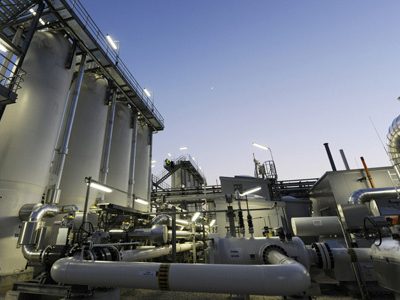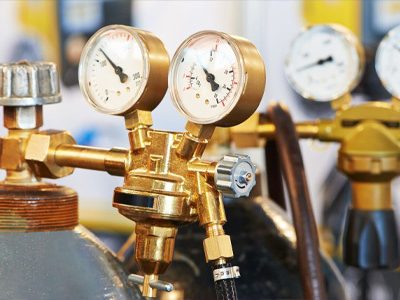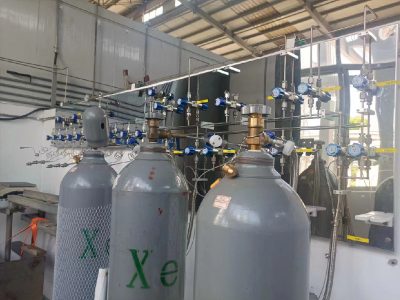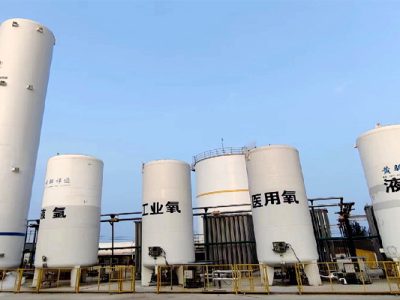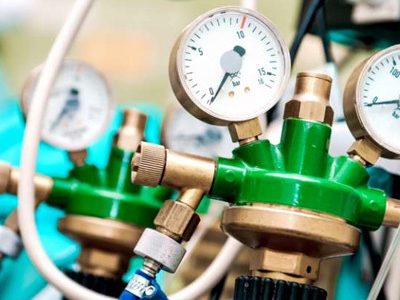Gases
Oxygen
Liquid Oxygen
Medical liquid oxygen.
Nitrogen
Liquid nitrogen
Liquid Nitrogen for Food
Hydrogen
Carbon dioxide
Rare Gases
Neon, krypton and xenon, the rare or noble gases, are only present in the air in trace amounts. Air contains just 0.0018% neon, 0.00011% krypton and 0.000009% xenon.
Rare gases, also known as noble gases, are a group of chemical elements that include helium (He), neon (Ne), argon (Ar), krypton (Kr), xenon (Xe), and radon (Rn). While they are called “rare gases,” they are actually quite abundant in the atmosphere, albeit in small concentrations. Here are some of the common uses of rare gases.
Despite their high price tags, demand for these rare gases is rising rapidly since numerous industries – ranging from electronics and glass fibre through lighting to automotive and aerospace – are increasingly harnessing the benefits of noble gases. Similar to oxygen and nitrogen, the rare gases xenon, neon and krypton are also obtained from air using cryogenic separation and purification. For several years now, Linde has been meeting rising demand for these gases by developing innovative plant concepts that boost the capture of rare gases from secondary streams in major air separation plants.
Argon gas
In incandescent light bulbs, argon is used to fill the bulb and create an inert environment, preventing the filament from oxidizing and prolonging the bulb's life.
In addition to its welding applications, argon is widely used in scientific research. It is utilized as a carrier gas in gas chromatography-mass spectrometry (GC-MS), an analytical technique used to identify and quantify chemical components in a sample.
Applications-CryogenicsWelding and Metal Fabrication:
Argon gas acts as a shielding gas in welding processes, such as gas metal arc welding (GMAW) and gas tungsten arc welding (GTAW). It creates an inert atmosphere around the welding zone, preventing oxidation and ensuring high-quality welds. Argon is preferred because it is inert, abundant, and relatively affordable.
Purity (%) ≥ 99.9999


High purity Helium
Besides cryogenic applications, helium is used as a carrier gas in gas chromatography, a technique used to separate and analyze chemical compounds. It is also employed in leak detection due to its low molecular weight and ability to diffuse rapidly.
Applications-Cryogenics
Helium is an essential cryogenic coolant due to its extremely low boiling point of -268.93 degrees Celsius (-452.07 degrees Fahrenheit). It is used in various applications, including cooling superconducting magnets in magnetic resonance imaging (MRI) machines, particle accelerators, and nuclear magnetic resonance (NMR) spectrometers. Helium’s low temperature also makes it useful for cooling certain materials during scientific research.Helium-3: Helium-3, a rare isotope of helium, has been used in cryogenic research, neutron detectors, and potentially in future fusion energy research.
Purity (%) ≥ 99.9999
Applications-Heliox
A mixture of helium and oxygen, called heliox, is used in deep-sea diving to prevent nitrogen narcosis and decompression sickness (the bends). By reducing the proportion of nitrogen in the breathing gas, heliox allows divers to reach greater depths without experiencing the adverse effects of nitrogen under high pressure.

HeNe
Applications-Helium-Neon (HeNe) lasers
HeNe lasers are widely used in laser technology, including barcode scanners, alignment systems, and laser pointers. They emit a visible red light and are characterized by their stability, reliability, and long operating life.
Neon gas
Getting the mix right for medical applications. Best known for its fluorescent capabilities, the noble gas neon (Ne) also plays a key role in ophthalmology. A mixture of neon, fluorine and argon is used during operations on corneas, for example, to correct eyesight via a laser beam. A mixture of neon, fluorine, argon and helium gases is used in today’s standard cold laser treatments such as excimer lasing. Many of the fluorine, argon and neon gas mixtures produced by Linde go to manufacturers of these kinds of eye laser devices. Excimer lasers, however, are not limited to medical applications. They are also deployed in the electronics industry, for example, in microlithography processes for electronic circuits. Excimer lasers are also used to manufacture mobile phone displays and drill microscopic holes in the nozzles of inkjet printers.
Purity (%) ≥ 99.9999
Applications
Neon signs and advertising displays utilize the distinctive red-orange glow produced by the gas when electricity passes through it. Neon signs are made by filling glass tubes with neon gas and applying electrodes at each end. When a high voltage is applied, the gas emits light.

Xenon gas
Dazzling solutions for the electronics sector. The extremely rare noble gas xenon (Xe) only accounts for 0.000009% of air. It is only used where lighter noble gases are not effective. This includes applications such as plasma screens and semiconductors as well as car headlights, camera flashes and anaesthetics. The growing popularity of xenon headlights in cars coupled with regulations mandating energy-saving bulbs has sent demand for this gas skyrocketing. Brightness is not the only reason behind the automobile industry’s move to xenon lights. Lower energy and fuel consumption was an equally appealing factor. Xenon bulbs can also be used in cinema projectors, light projectors and camera flashes. Xenon accounts for at least 5% of the gas mixture in plasma screens. It is used with neon to fill the many small cells between two glass plates. Every pixel is made up of three of these cells. To create a colour image, each cell is individually charged using a transistor, causing the gas to temporarily ionise and form plasma. Xenon is also used in the aerospace industry for ion thrust propulsion, a technology that utilises ion beams to propel space rockets. Put simply, an ion beam is generated by initially ionising xenon and then using an electrical or magnetic field to accelerate the ions.
Purity (%) ≥ 99.9999
Applications-Space Exploration
Xenon is commonly used in ion propulsion systems for spacecraft. Ion thrusters generate thrust by ionizing xenon gas and accelerating the ions using electrical fields. This technology provides highly efficient and precise propulsion, allowing for long-duration space missions.
Applications
Xenon arc lamps are used in specialized lighting applications, such as film projection, microscopy, and solar simulators. Xenon gas is also utilized in xenon computed tomography (CT) scans, where it is used as a contrast agent to enhance the imaging of blood vessels.

High-intensity discharge (HID) lamps, which are used in automotive headlights and movie projectors, employ xenon gas due to its high light output and excellent color rendering properties.



G-trust is a leading supplier of xenon gas for various industries.
G-trust has been a leading supplier of xenon gas for a couple years. Our xenon gas is widely used in various industries, including satellite programs, space travel, and as a propulsion agent for spacecraft and satellite thrusters. In addition to these applications, we also supply xenon to the semiconductor, lighting, and medical markets.
High-purity xenon gas is crucial in semiconductor processes.
G-trust’s ultra-high purity xenon gas is suitable for the most demanding semiconductor processes. The use of high-purity xenon gas is crucial in semiconductor processes, where any impurities can contaminate the silicon substrate or react with process chemicals to produce poisonous and highly corrosive hydrogen fluoride (HF). Therefore, our xenon gas is meticulously purified to ensure that it meets the stringent purity standards required for these applications. Our ultra-high purity xenon gas has an impurity level of less than 0.1 parts per million (ppm), making it suitable for the most demanding semiconductor processes.
G-trust xenon gas is designed to prevent damage to sensitive electrodes in aerospace applications.
In aerospace applications, the electrodes used in propulsion systems are very sensitive and can easily burn up if exposed to impurities or excess oxygen and water. This is why G-trust xenon gas is specifically designed to have low oxygen and water content to prevent any damage to the electrodes. Our xenon gas has an oxygen level of less than 1 ppm and a water vapor level of less than 5 ppm, making it ideal for aerospace applications.
G-trust ultra-high purity xenon gas is used in gamma-ray and X-ray spectroscopy detectors for conducting fundamental research.
In addition to these applications, G-trust ultra-high purity xenon gas is also used in gamma-ray and X-ray spectroscopy detectors for conducting fundamental research into the universe and dark matter. Our xenon gas is perfect for these applications due to its high purity and excellent stability, which enables researchers to conduct accurate and reliable experiments.
G-trust has been a trusted supplier of high-quality xenon gas for several decades.
Overall, G-trust has been a trusted supplier of high-quality xenon gas for several decades. Our commitment to quality and purity has enabled us to meet the most demanding requirements of our customers in various industries.


Krypton gas
Optimised energy balance in modern buildings. Krypton (Kr) is a key success factor in energy-saving windows. It is used as a filler gas between insulated glass panes as its low thermal conductivity increases the effectiveness of insulation. 40% or more of all krypton produced worldwide is used for this purpose. As with xenon, krypton is also becoming an increasingly important gas in the lighting sector. The car industry, for example, now offers headlights that work with krypton. This rare gas is also used as a filler gas in halogen bulbs, energy-saving bulbs and gas discharge tubes in illuminated billboards. Replacing nitrogen/argon with krypton in halogen energy-saving lamps and fluorescent lamps increases bulb life and produces more effective lighting.
Applications
Krypton is also used as sputter gas (ionised form) in the physical vapour deposition (PVD) technique to create thin metallic surface film on materials. This sputter deposition application is used to coat various materials with a thin film on semiconductor devices, glass and food packing materials (eg aluminised PET film for snack bags). Inert argon or xenon can also be used as sputtering gases.
Purity (%) ≥ 99.9999
Radon
Applications-Earthquake Detection
Radon gas is a naturally occurring radioactive gas produced by the decay of uranium in rocks and soil. Monitoring radon gas
